2021 Kawasaki ZX-10R
Tested by Rennie Scaysbrook
It’s reasonable to say the past near decade of international superbike competition has belonged to one brand and one man. Kawasaki and Jonathan Rea have been near unstoppable over the last six years, taking six consecutive titles in a reign even more dominant than our own Mick Doohan enjoyed in the 1990s.
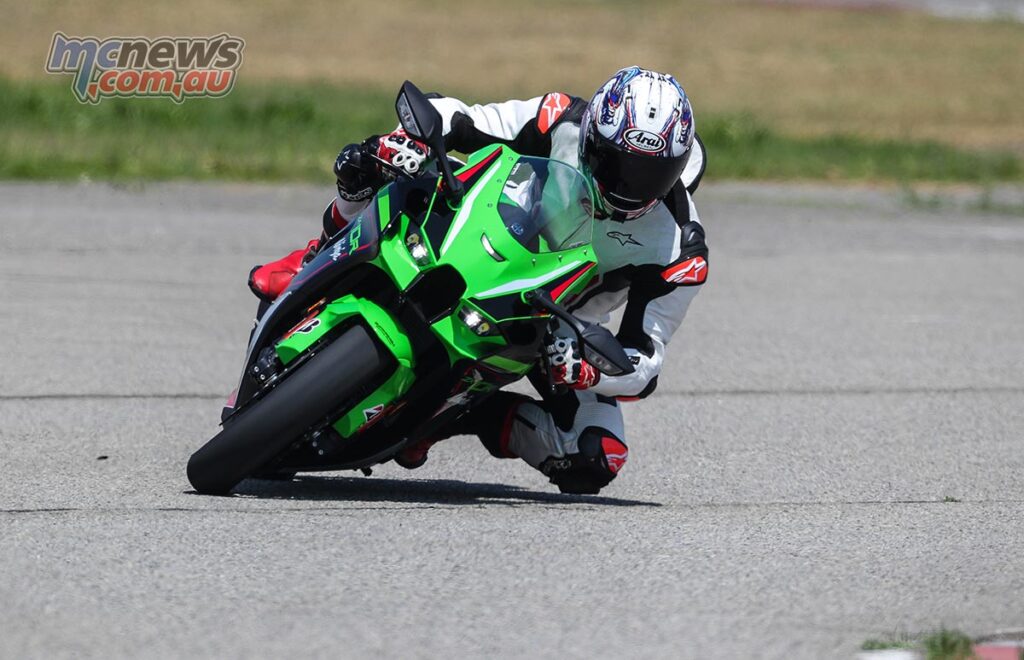
Kawasaki’s success at WorldSBK competition is no accident. The company’s might was pushed 100 per cent into production racing’s top-tier in 2010 rather than whizzed away at the bum-end of MotoGP, and the results have been undeniable (Kawasaki’s certainly got better bang for its commercial buck in WorldSBK than Aprilia has in MotoGP and for less than half the cost).
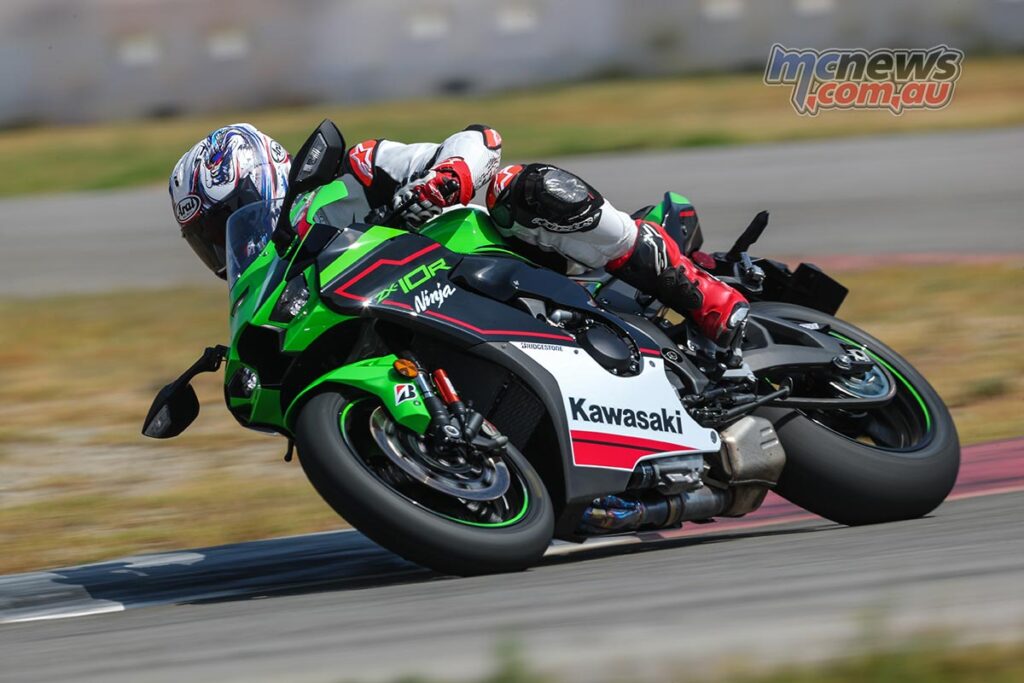
The machine responsible for this green streak is the redoubtable ZX-10R (or ZX-10RR if we’re being picky), but the last time we saw any major changes to the steed was back in 2016 with the debut of the light crank, over-square motor that is still fitted to this 2021 edition.
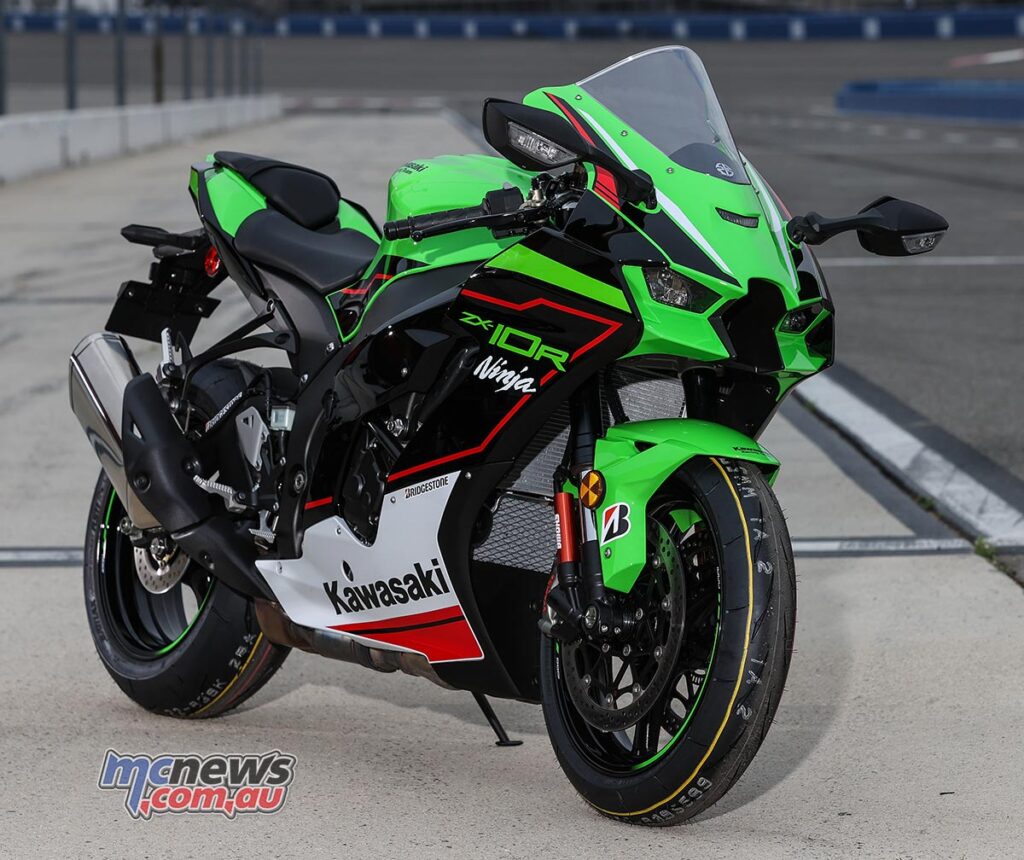
The motor was never really the issue with the Kawasaki. It’s one of the most reliable, robust superbike motors out there, capable of punching out near 200 hp at the tyre with a few simple mods like a pipe and a flash for Superstock racing overseas and Superbike here in Australia. As such, the powerplant is essentially unchanged from the unit that debuted in 2016. There’s a new exhaust, new oil cooler, a gearbox with shorter ratios in the first three gears and a shorter overall final drive to help get the green hulk out of the corner hard on full throttle.
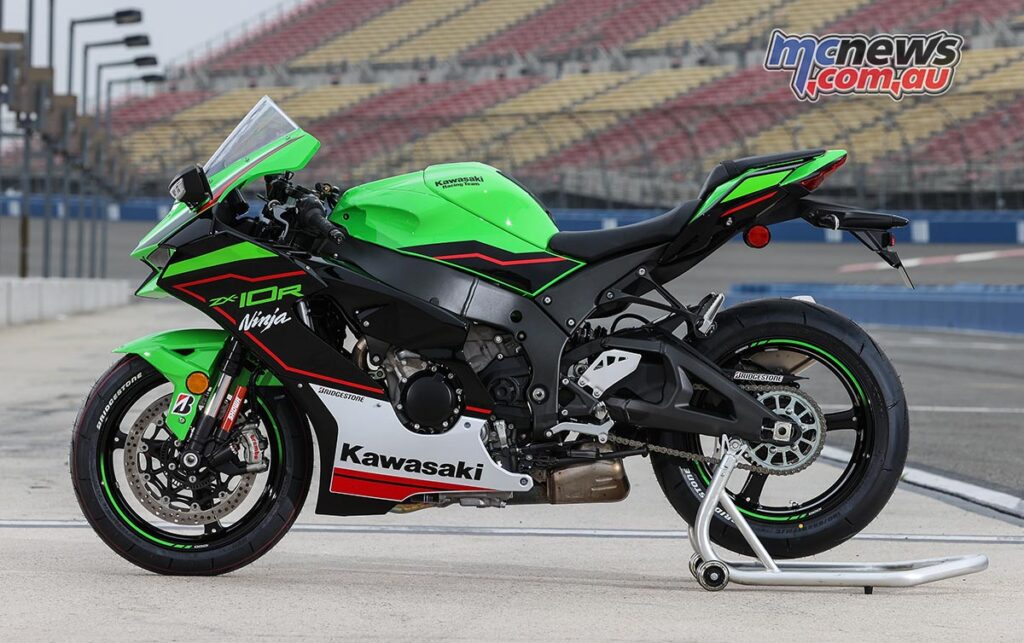
It’s a similar story with the chassis and suspension. The frame and swingarm are unchanged although the wheelbase is 10 mm longer, achieved by a 2 mm greater fork offset and the wheel sits further back in the swing-arm, thanks to a longer length adjuster. The swing-arm itself sits lower in the frame and the rider is tilted a mere 0.2 percent closer to the front-end to help put more weight over the front under braking and cornering.
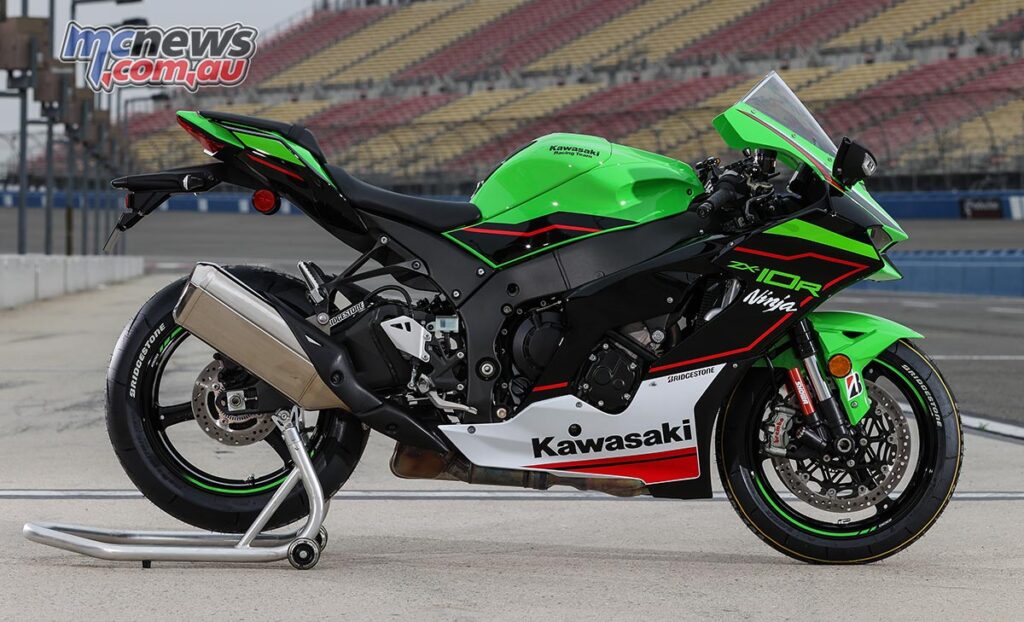
Kawasaki were the first to use the fantastic Showa Balance Free Front Fork and the Balance Free Rear Cushion shock on the 2016 ZX-10R and thus we shouldn’t be surprised to see them retained. They’ve been slightly altered, with slightly softer front springs while the rear spring is a slightly heavier 95 N/mm. Even the now-third generation Brembo M50 four-piston front brake calipers have been retained.
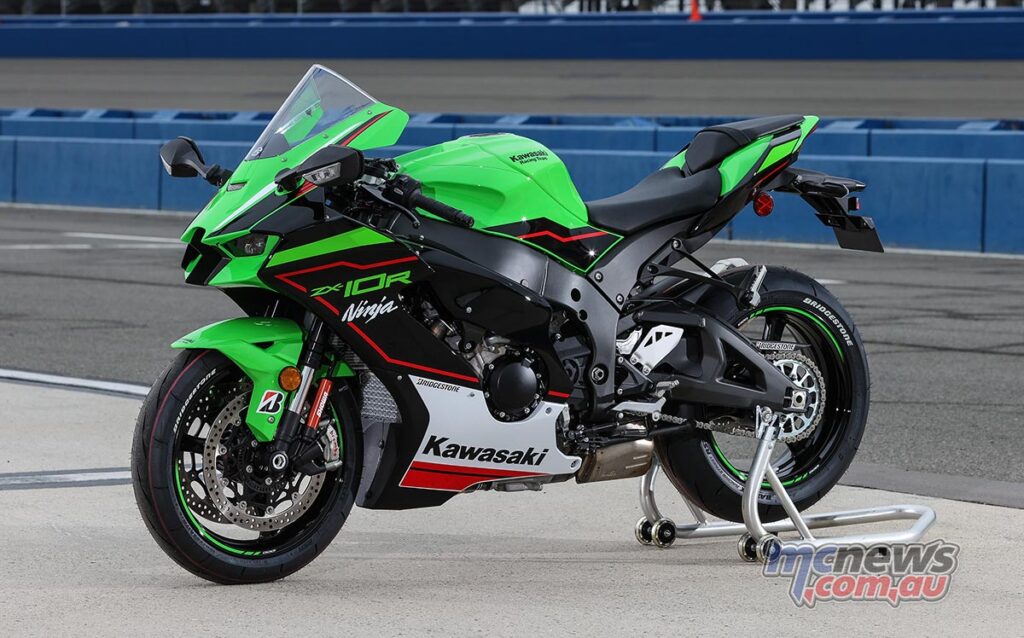
Ok, so where’s the difference? It’s in the Emperor’s New Clothes, sir.
A change is as good as a holiday, as the saying goes, and the one thing that was annoying Jonathan Rea more than anything was his Kawasaki didn’t come with the fancy wings all the other kids in school had.
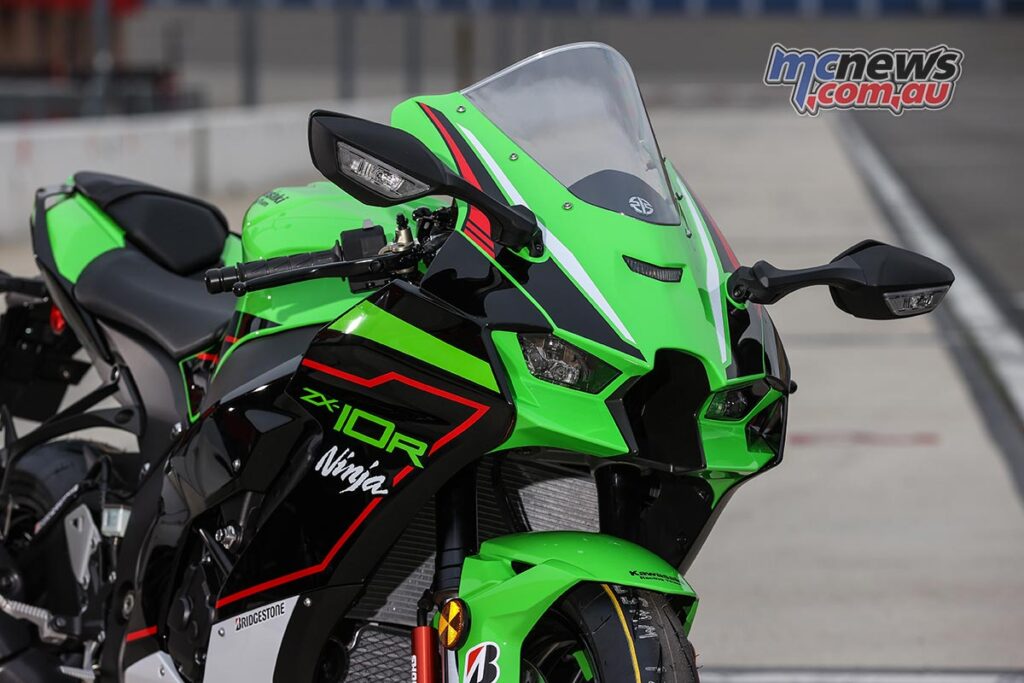
For a WorldSBK racer to have downforce wings fitted, the production machine must also. The Italians have been on this train for a few years, but the Japanese have been slow to react with only Honda developing inboard winglets on their CBR1000RR-R SP. This is the same route Aprilia took with the spectacular 2021 RSV4, a far less garish design than the wide wings used by Ducati but no less effective. Thus, Kawasaki is also going this direction to give Rea the downforce he so craves.
The winglets are discreet, tucked in either side of the fairing and help increase downforce a significant 17 per cent while reducing drag by a claimed seven per cent.
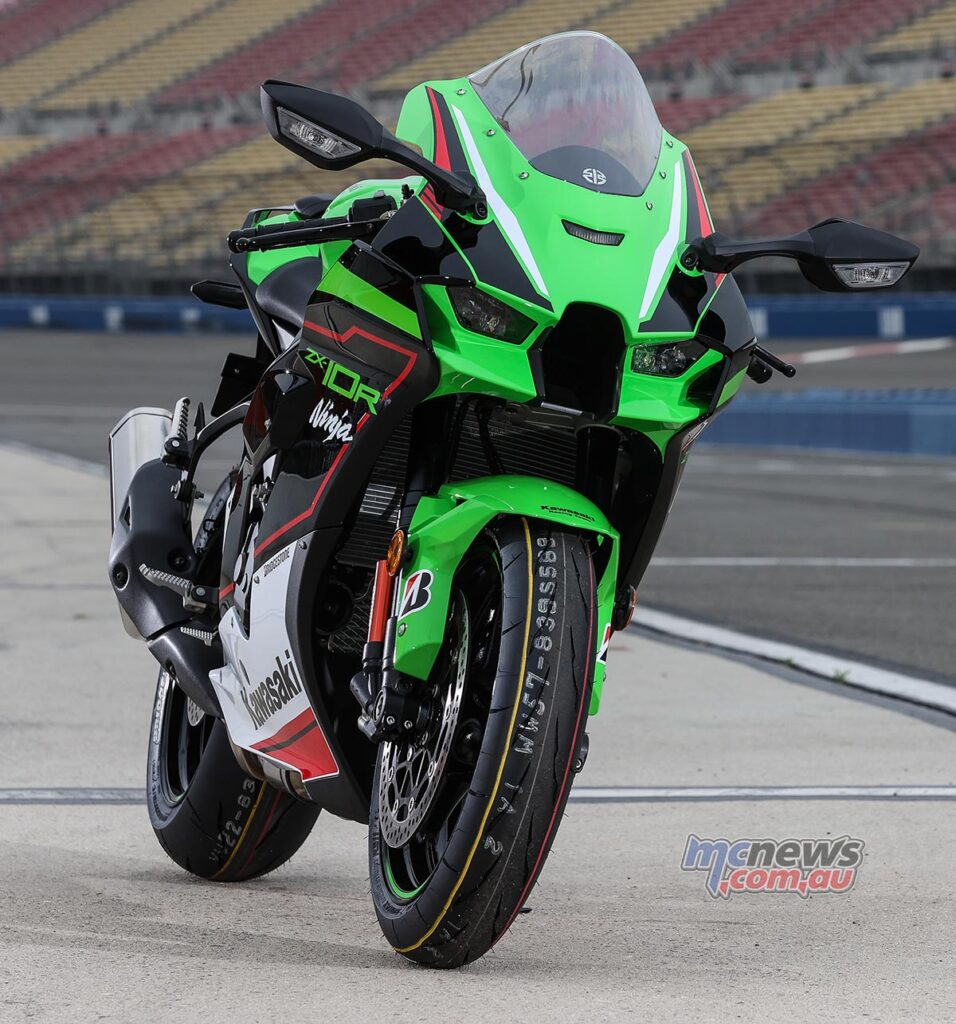
The winglets are paired with a more aggressive, wider stance from the handlebars, and the screen has grown 40 mm to help you tuck in when in full send mode (for me on track at 183 cm, this was a god-send).
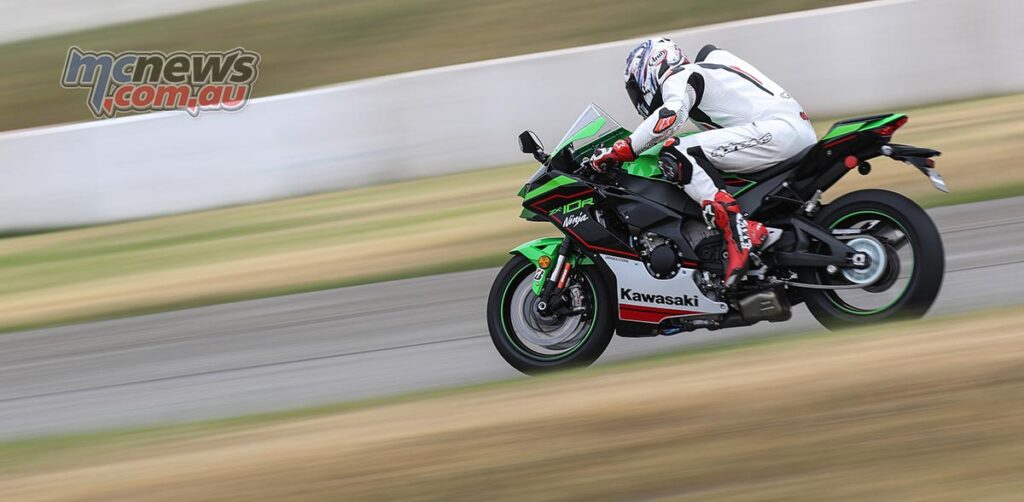
LED lighting abounds in the new 10R, the lights hidden inside an all-new face that’s caused quite a stir among sportbike beauty debaters. I’m either way on it—it’s not the ugliest but it ain’t the prettiest, either. Hey, if it wins races, it’ll be pretty. Winners always are.
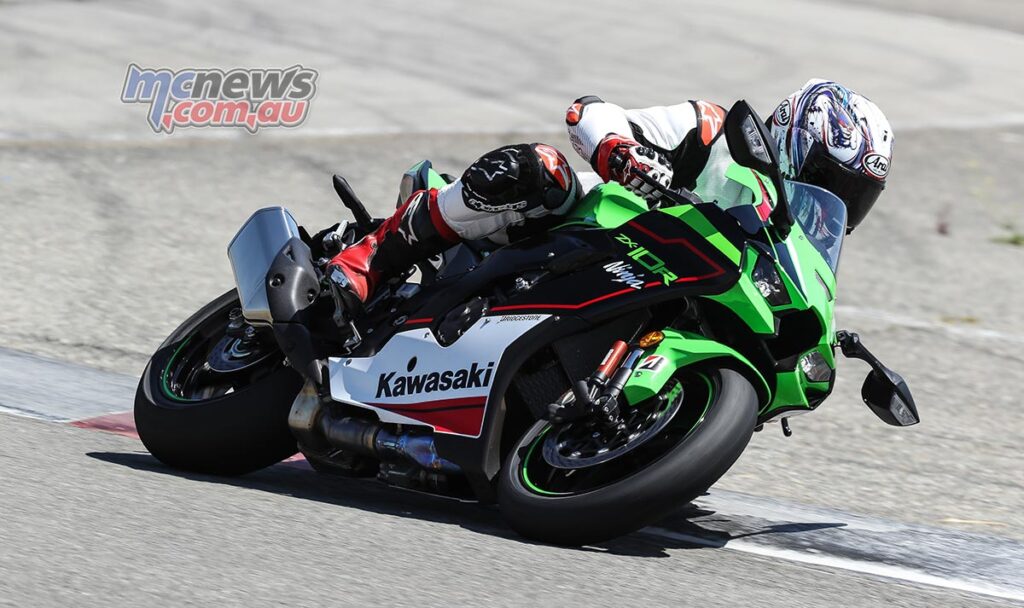
Superbike is all about how many electronics you can cram into an ECU these days but, mercifully, Kawasaki hasn’t overloaded you too much with choice. The old 2016-2020 ’10R didn’t have ride modes per se—you could alter power delivery and traction control like you can in the ’21’s Rider Mode—but that was it. The new bike has a Rain, Road and Sport mode, all with preset levels of TC and power to go with the fully programmable Rider Mode. And, the 10R now comes with cruise control, all of which is nothing ground-breaking in terms of current superbike spec’.
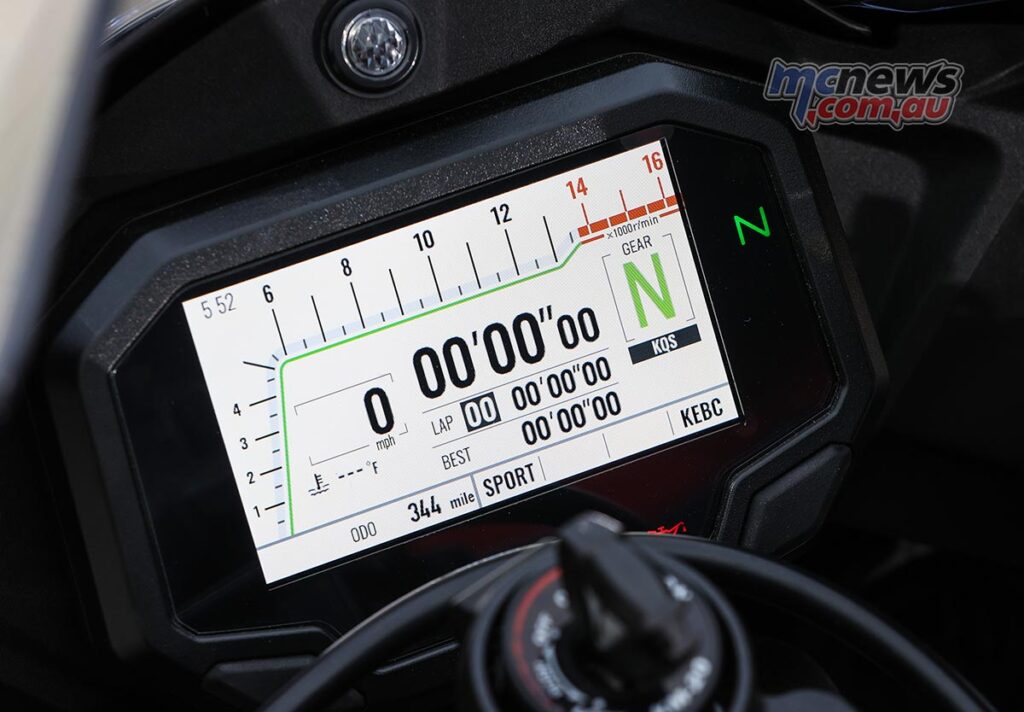
What is cool about the electronics is it’s basically everything you need and nothing you don’t. The TC and Wheelie Control are linked, and although this is a system I’ve generally hated in the past (here’s looking at you, 2017 Honda CBR1000RR SP), Kawasaki’s got it figured out pretty well. The slip in level one on the ’10R allows for a bit of front wheel carry if needed and doesn’t chop the power harshly, and the steady, stable nature of the chassis gives you plenty of warning before things get too sideways, at which point you know you’ve really screwed up.
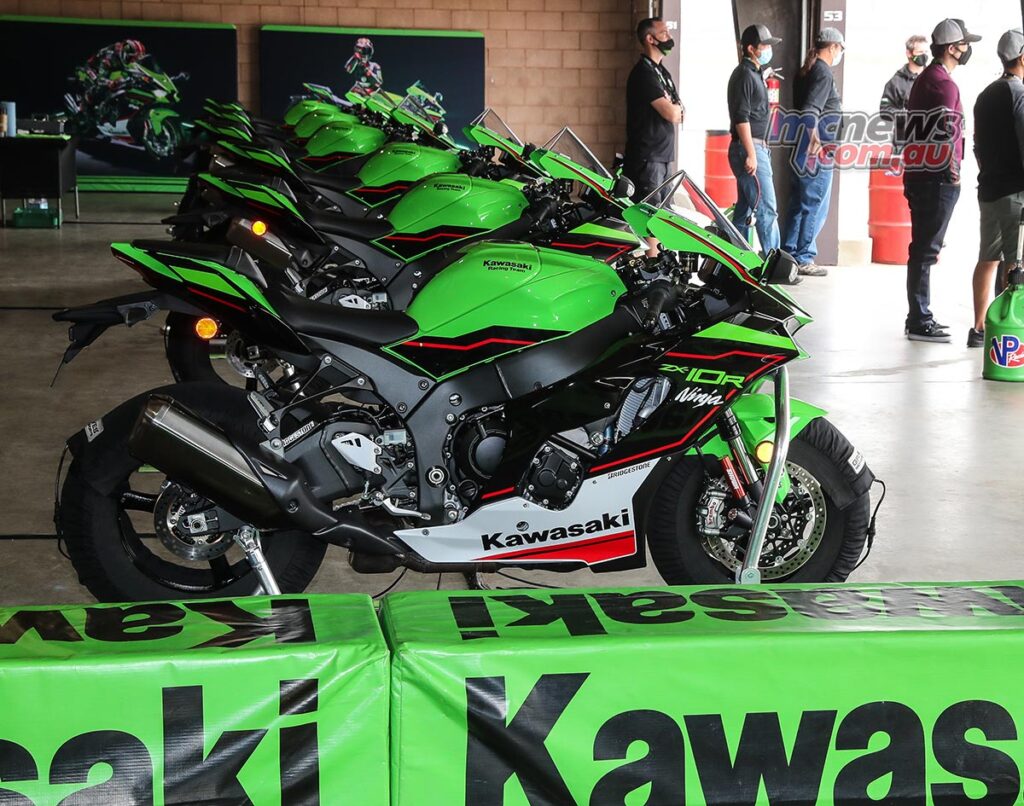
The chance to have a swing on Kawasaki new green meanie came at the soon-to-be-closed-to-bikes Auto Club Speedway in Fontana, California. NASCAR recently announced they’d be turning the two mile oval into a short track, meaning the infield section and thus any hope bikes will ride there again will be gone real soon. This sucks the fat one because there’s very few places in California you can hold a superbike pinned to the hilt in sixth gear. Now there’ll be one less. Oh well, better enjoy it while it lasts…
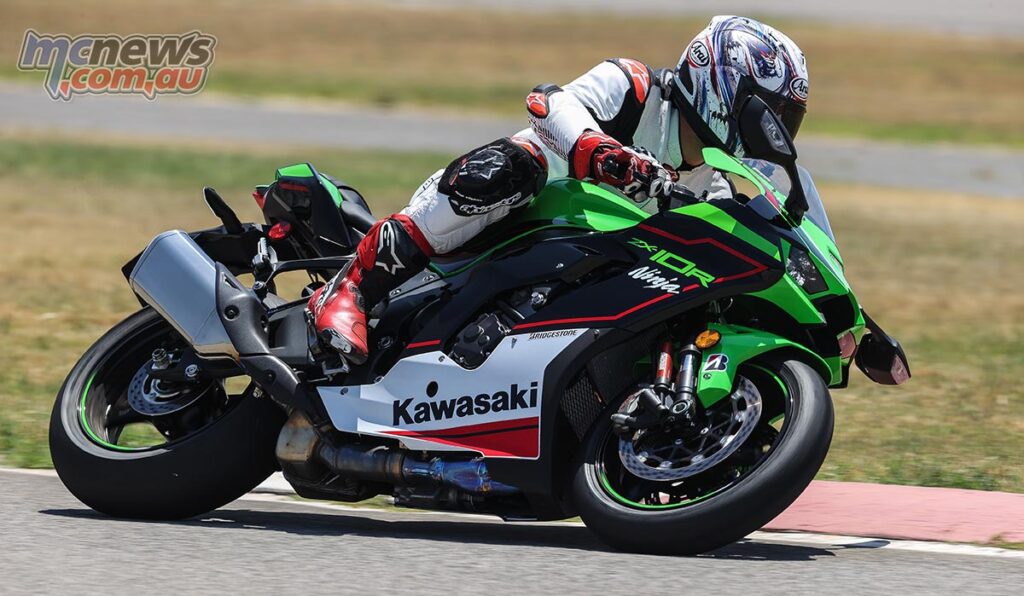
When you exit the third gear triple-left onto the straight and wind the 10R out, it’s not the motor that’s impressive. Indeed, if you’ve ridden one of the 1100cc beasts (Aprilia and Ducati) it feels almost slow. It’s not, but the big dogs would surely eat it in a straight line. What is impressive is the stability of the chassis. At 270 km/h, the 10R was solid as a rock, almost serenely so. The wider ’bars and taller screen made for an far easier tuck-in than previously, making the ride a less intimidating proposition than the old bike. I can mainly put this easier-going nature down to the revised fairing, because nothing else of note that would cause this has changed.
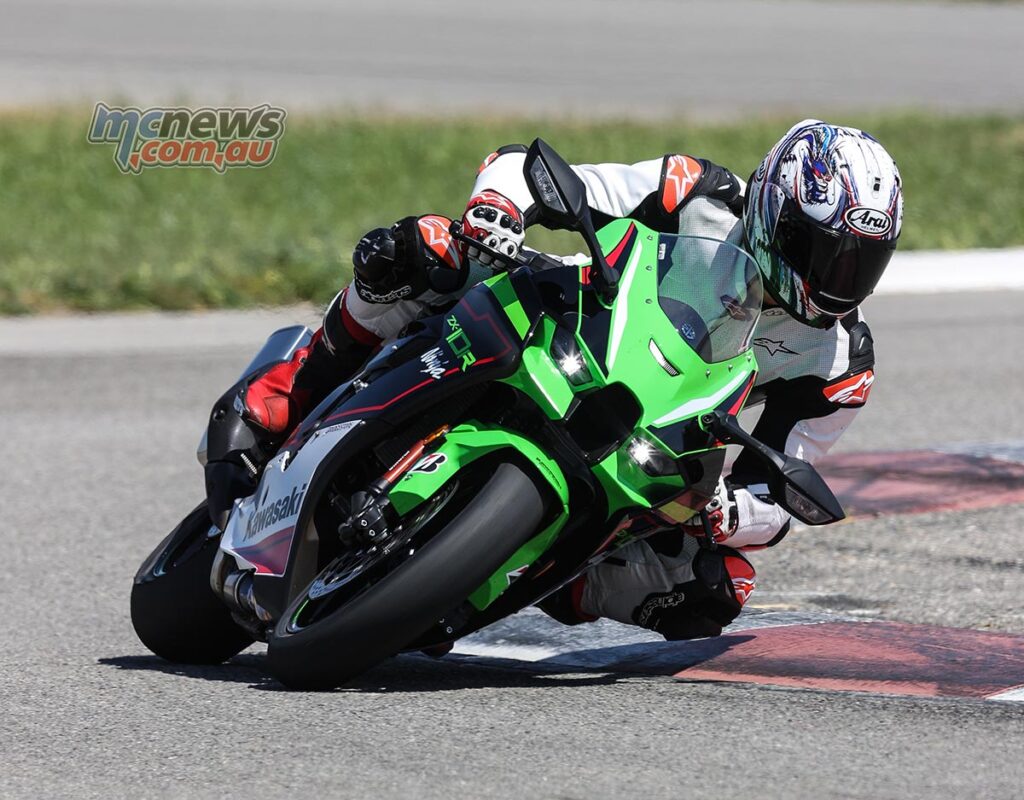
It still feels very much like a ZX-10R. After all, you still have the same motor aside from some intake changes and pretty much the same chassis, although those ergonomics changes will definitely help you if you’re a touch on the taller side like me.
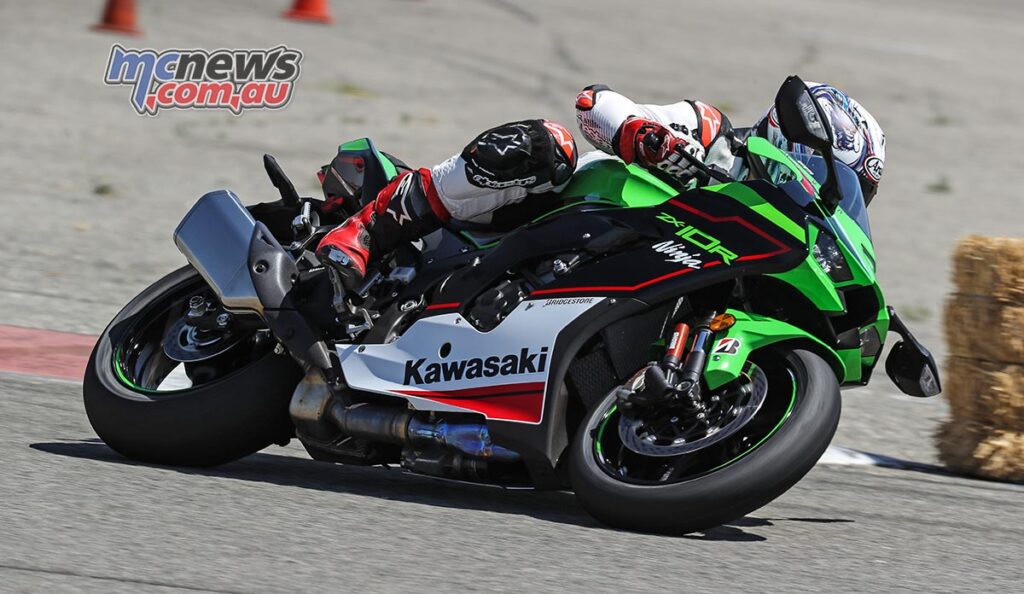
The motor pulls harder out of hairpins than before, showing the changes to the gearing have borne fruit. The 10R doesn’t lag quite as much when the revs are below 3000, although there’s still a bit of a flat spot which likely has something to do with the emissions regulations each manufacturer needs to abide by (some handle this hurdle better than others).
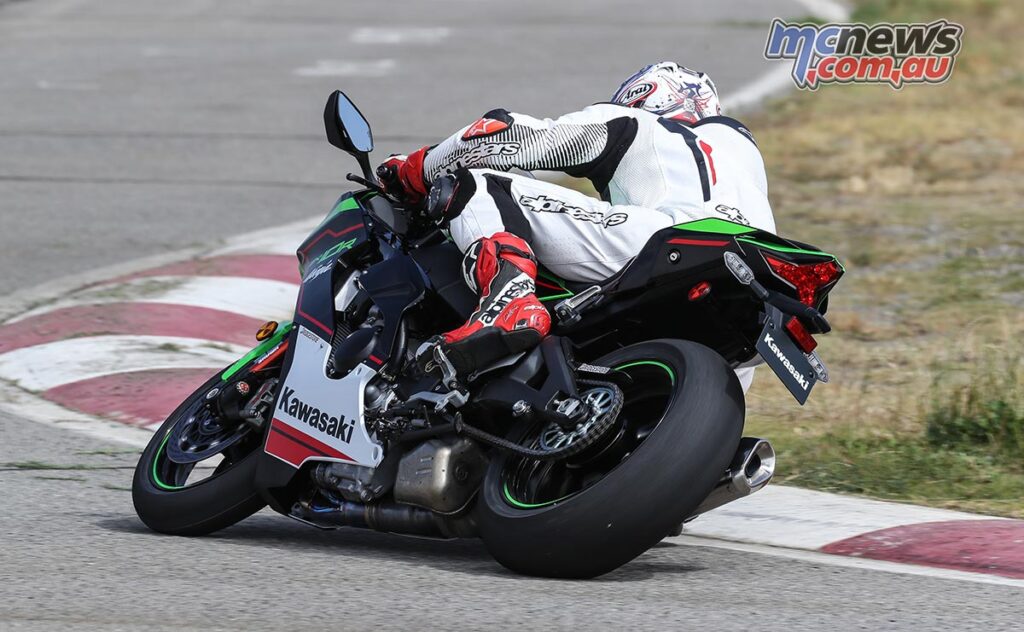
Kawasaki’s given you an up and down quickshifter for the six-speed ’box. It’s good but not perfect, as I’d get repeated shift issues when high in the revs in third gear. This was a repeating problem, and one that was only solved if I dropped the revs about 1000 rpm and thus missed out on some vital top-end horsepower. Rider error? Perhaps, but I’ve ridden thousands of laps on superbikes at Fontana and not had this issue in the past.
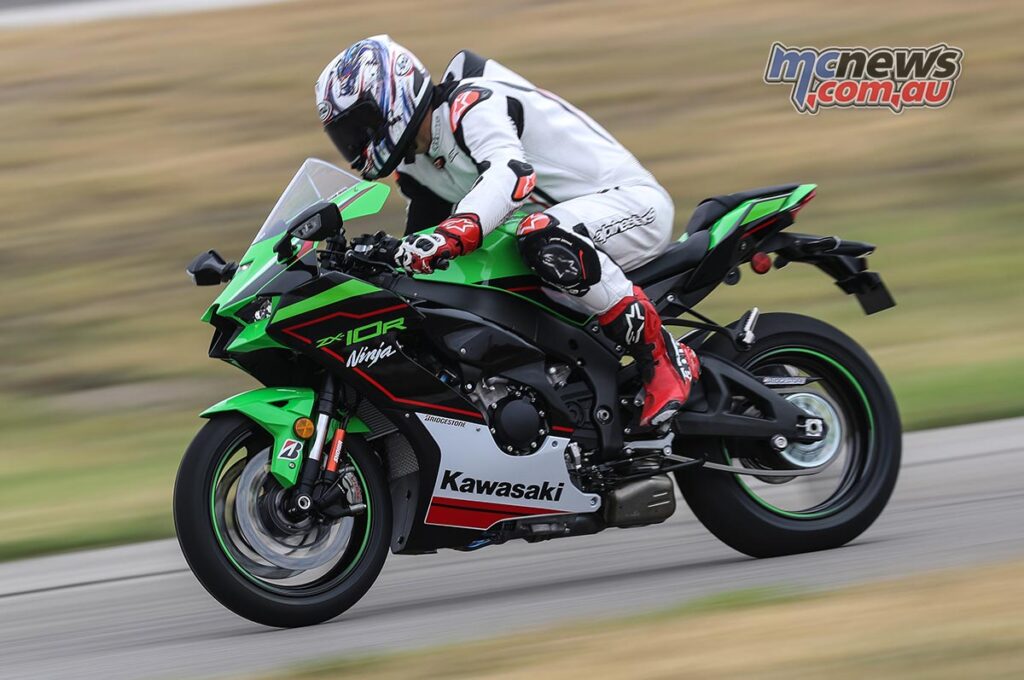
That was my only major gripe with the motor and gearbox. If I were going racing on it the first thing I’d do is shorten the gearing even further to access more of that mid-range earlier, but that’s standard race stuff.
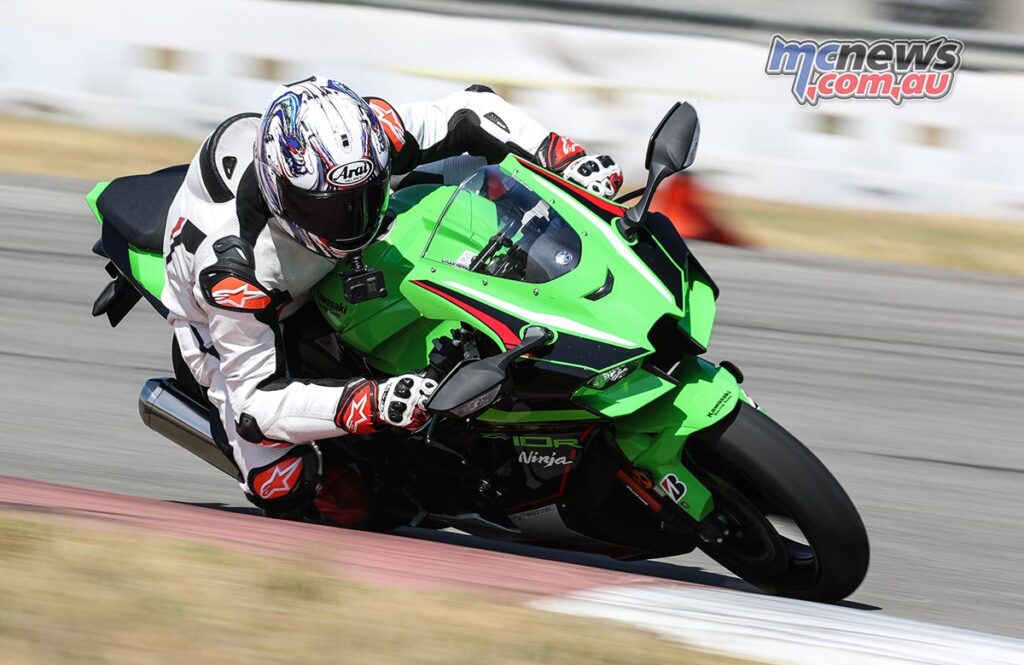
Turning to the chassis, you’ve got an old friend there. It’s so confidence inspiring, allowing me to maximize turn speed and use every last ounce of grip from the Bridgestone V02 racing slicks we had for our test.
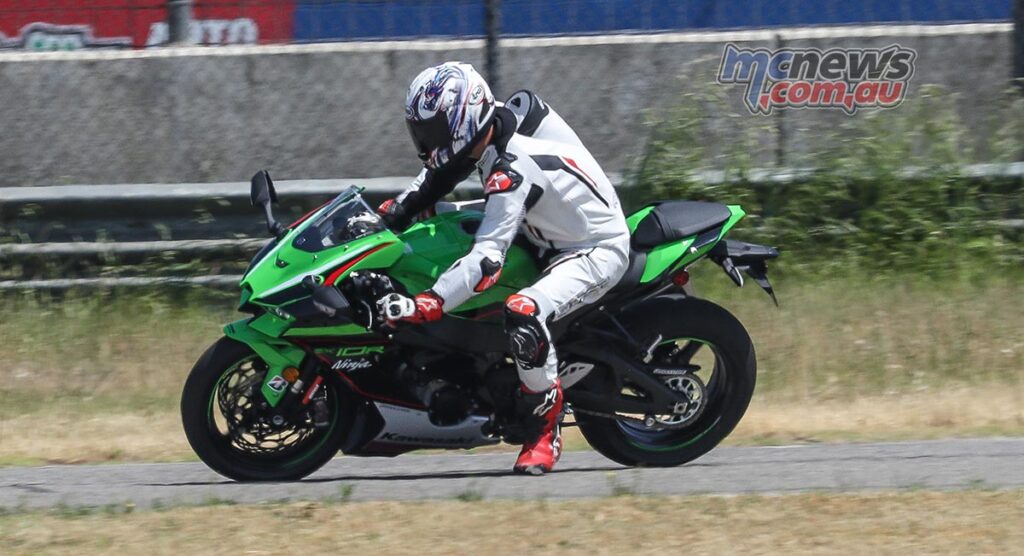
The first time I used the Showa Balance Free Front Fork and the Balance Free Rear Cushion shock at Malaysia in 2016 was a bit of an eye-opener in the amount you could feel the front tyre doing its thing, and the 2021 ’10R is no different. Regardless of age (a bit like the brakes), the front-end works superbly, allowing you to trail brake right up to the apex and wind it back on for the exit.
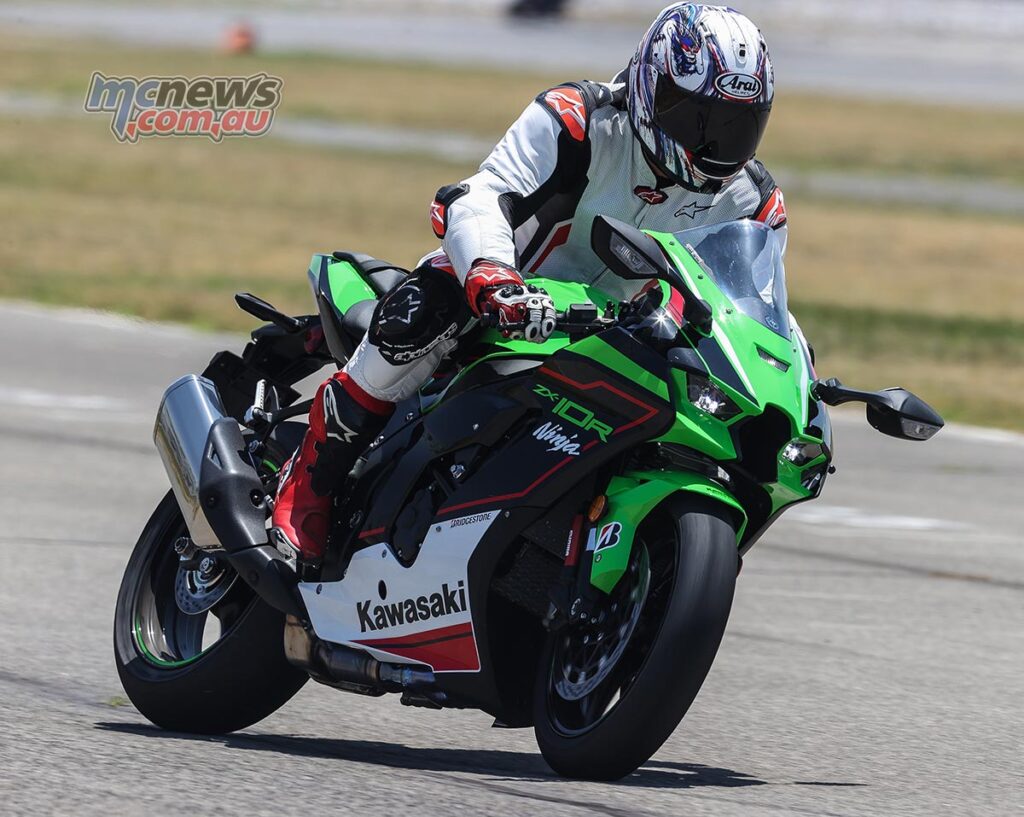
When you do, you’re greeted by a chassis that doesn’t quite drop on its arse thanks to the heavier spring, keeping a balanced chassis and lets you get really jiggy with it as the power comes rushing in. Couple this with the excellent TC system, and you can lay black lines and show off all you like with a solid safety net underneath you.
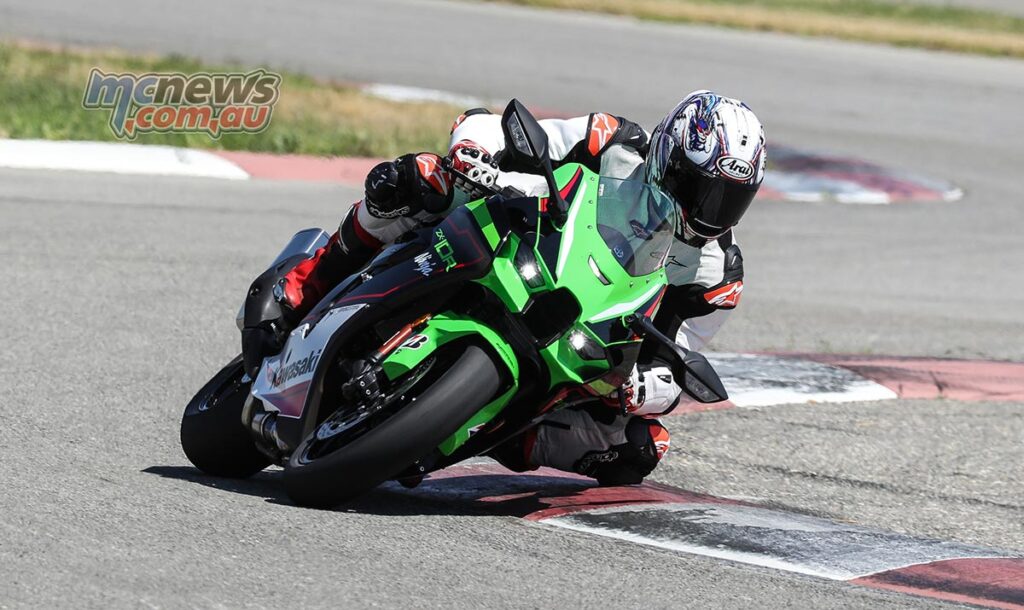
There’s a great feel from your right wrist to your bum to the rear wheel on a ZX-10R, which is in almost direct contrast to the fire breathing first edition way back in 2004. Hey, it had to grow up sometime.
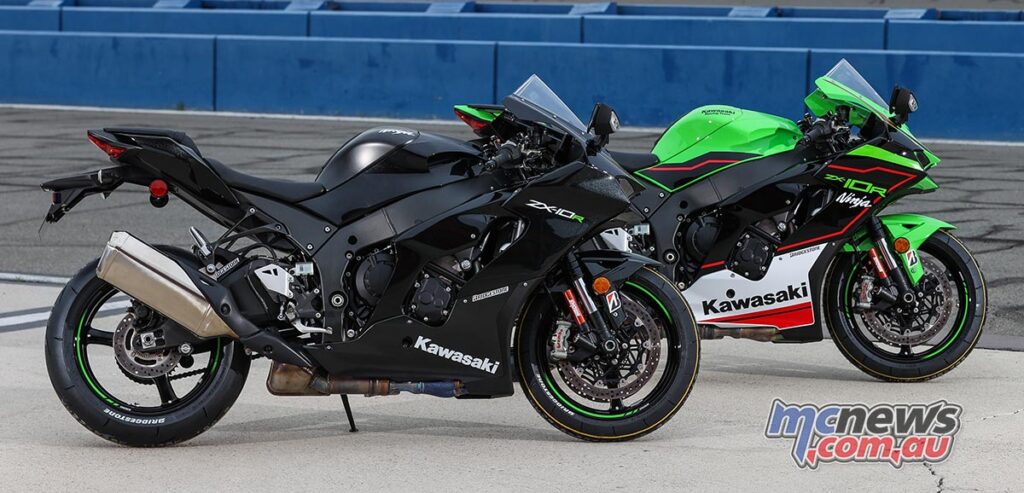
It’s little wonder the Kawasaki ZX-10R has populated racing grids for so long. It’s a splendid superbike, easy to work on and reliable in that traditional UJM style. It’s not terribly different to the old bike, a good thing, because it keeps winning races not just in highly modified WorldSBK, but also in Superstock trim around the world.
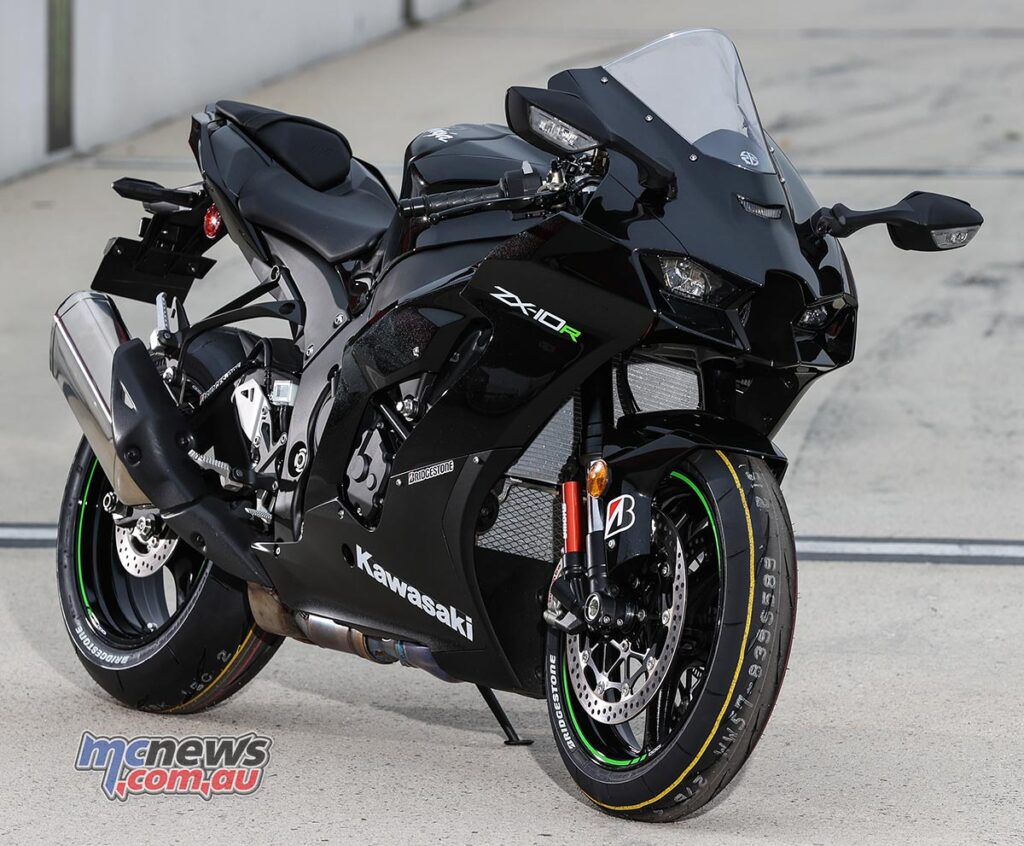
The new 10R will likely continue this trend as it is very much a matter of ‘if it ain’t broke, don’t fix it.’
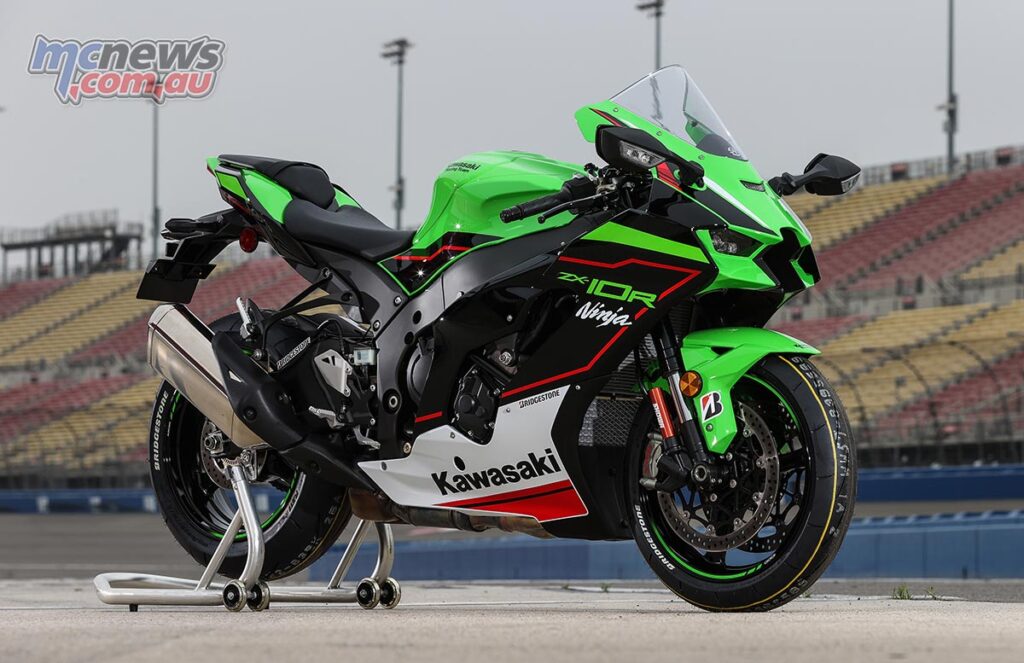
| 2021 Kawasaki Ninja ZX-10R Specifications | |
| Engine | 998cc, 4-stroke, In-Line Four, DOHC, 16-valve, liquid-cooled |
| Bore x Stroke | 76.0 x 55.0mm |
| Compression Ratio | 13.0:1 |
| Claimed Power | 200 hp at 13,200 rpm (RR 201 hp at 14,000 rpm) |
| Claimed Torque | 114.9 Nm at 11,400 rpm (RR 111.8 Nm at 11,700 rpm) |
| Induction | DFI w/47mm Mikuni throttle bodies (4) with oval sub-throttles, two injectors per cylinder |
| Gears | Six-speed, return shift |
| Clutch | Wet multi-disc |
| Frame | Twin spar, cast aluminium |
| Forks | 43mm inverted Balance Free Fork, adjustable stepless rebound and compression damping, spring preload adjustability, 119 mm travel |
| Shock | Horizontal back-link with Balance Free gas-charged shock, stepless, dual-range (low-/high-speed) compression damping, stepless rebound damping, fully adjustable spring preload, 114 mm travel |
| Tyres | 120/70 ZR17 (F), 190/55 ZR17 (R) |
| Front Brakes | Brembo dual semi-floating 330mm discs with dual radial mounted monobloc 4-piston calipers, KIBS |
| Rear Brake | Single 220mm disc with aluminum single-piston caliper, KIBS |
| Electronics | Electronic Cruise Control, Kawasaki Launch Control Mode (KLCM), Kawasaki Intelligent anti-lock Brake System (KIBS), Kawasaki Sport Traction Control (S-KTRC), Kawasaki Engine Braking Control, Kawasaki Quick Shifter (KQS) (upshift & downshift), Kawasaki Corner Management Function (KCMF) |
| Instrumentation | TFT |
| Kerb Weight | 207 kg (205 kg RR) |
| Seat Height | 835 mm |
| Wheelbase | 1450 mm |
| Rake / Trail | 25.0°/106.7 mm |
| Fuel Capacity | 17 Litres |
| Service Intervals | N/A |
| Warranty | N/A |
| Available | N/A |
| Price | $26,000 for ZX-10R – $42,000 for ZX-10RR |
Photography by Brian J Nelson
Source: MCNews.com.au
















